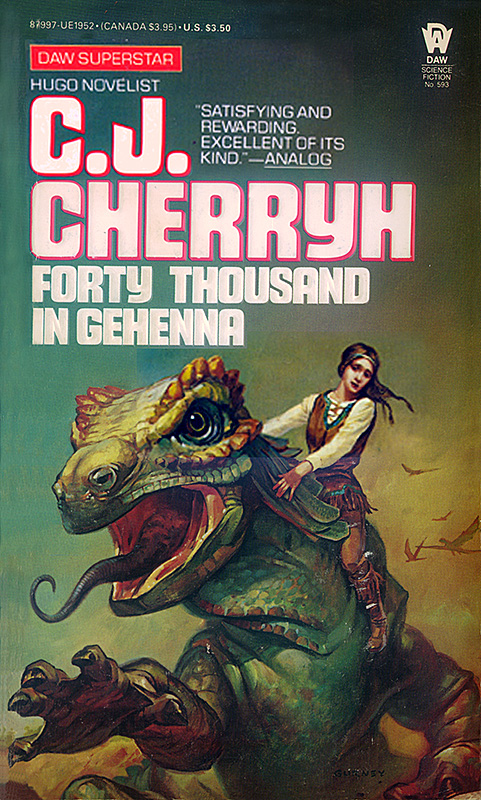 Found this at the annual C.H. Booth Library book
sale. It's a standalone in the Alliance-Union Universe of which Downbelow Station
is probably the most well-known. Having recently read The Pride of Chanur, I was curious
to read something else by C.J. Cherryh. Unfortunately, this one wasn't as enjoyable.
Found this at the annual C.H. Booth Library book
sale. It's a standalone in the Alliance-Union Universe of which Downbelow Station
is probably the most well-known. Having recently read The Pride of Chanur, I was curious
to read something else by C.J. Cherryh. Unfortunately, this one wasn't as enjoyable.The book is essentially divided into three parts: the founding of the colony by the Union and its demise, re-contact with the descendants of the survivors by the Alliance, and the rise of the Gehennan civilization. The first section starts out dull and then fades into a depressing morass of doom. The middle section is ok, but every time an interesting character comes onto the scene, their time on the stage is too short. The last section proves to be the best as not only do the characters stick around, but we get to learn about how humans and calibans have interacted to build their civilization together.
I think this book would've been better if Cherryh eliminated that first section altogether and just summed it up in a briefing of Alliance sociologists or had them figure things out as a mystery.
The majority of the colonists were azi, programmable clones. The azi got their skills uploaded into them via "tapes." While they didn't have a choice as to whether they would go to Gehenna or not, they were promised that they could live like "born men" and have children of their own. While it was a promise that was kept, eking out a life on Gehenna proved difficult as the climate was tough on both man and machine and the supply ships never came.
The first section of the book spent a great deal of time on them, even looked into the life of one of them, Jin. When the clones have children, they lack their parents' reverence and obedience. You could say that they're rebellious, or that, being smarter than their parents, they realize that they've been screwed over.
But that final section is where Cherryh really shines. The dynamics of the human-caliban relationship is brought to fore. It's a complex one as human leaders interact differently with the calibans than the weirds do. While it might seem like a caste society, genetics are the true determination. The "first" among a tower will quite likely have a child that shows the characteristics of a weird. The calibans have their own battles for dominance based on color and size. And calibans play a large role in human politics.
But getting to this last part required a lot of patience from me. While some readers have plenty of patience, other potential readers might not. If you're the type of person that can hold out for 100+ pages, you have a chance. If you're not, well...
Two-star start. Three-star middle. Four-star finish. So, three stars overall.
\_/
DED
No comments:
Post a Comment